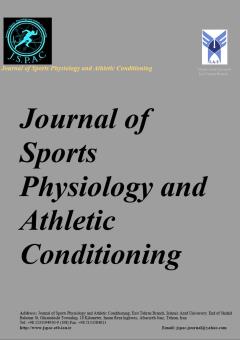Analysis of Physical fitness and Anthropometric Fitness with Respect to Ranking in the Iranian National Table Tennis Team Selection
Subject Areas : Sport Physiology
Mehran Ahadi
1
*
,
Reza Behdari
2
*
![]() ,
Behzad Divkan
3
,
Behzad Divkan
3
1 - Department of Physical Education and Sport Sciences, Central Tehran Branch, Islamic Azad University, Tehran, Iran.
2 - Assistant Professor of Exercise Physiology, Department of Physical Education and Sport Sciences, West Tehran Branch, Islamic Azad University, Tehran, Iran
3 - Department of Physical Education and Sport Sciences, East Tehran Branch, Islamic Azad University, Tehran, Iran.
Keywords: physical fitness, anthropometry, Aerobic power, Anaerobic power, table tennis,
Abstract :
Background: The aim of the present study was to assess the physical fitness and anthropometric characteristics variables associated with individual performance in elite table tennis players according to ranking. On the direction of this aim 16 male National table tennis Players'
Materials and Methods: participated in this study. Sixteen elite players divided into A players (n = 8; 26 ± 5.14 years) and B players (n = 8; 25.63 ± 4.46 years) participated in the study. According to ranked some physical fitness, physiological and anthropometric variables were recorded of each subject. To determine Physical fitness, participants performed anaerobic power; wingeyt test, Aerobic power; 1600 m running and anthropometric test.
Results:
A players showed higher values in maximum oxygen consumption and somatotype component. A mesomorph – endomorph somatotype was registered for the lower ranked, On the other hand somatotype of first 8 table tennis players could be defined as ectomorph –mesomorph. The somatotype was predominantly mesomorphic, while better players showed a more ectomorphic somatotype, meaning ecto-mesomorphic. Elite male table tennis players (A players) showed better physical fitness and somatotype compared to B players.
Conclusion:: It seems anthropometric and physical fitness are important parameters for performance. The dominance of the ectomorph - mesomorph body type reveals a potential advantage of this body type, that increases the success probability, Due to the scarcity of data on elite table tennis players, these results can serve as reference values for different table tennis practitioners. examine statistical differences between groups and p value < 0.05 was considered to be significant.

